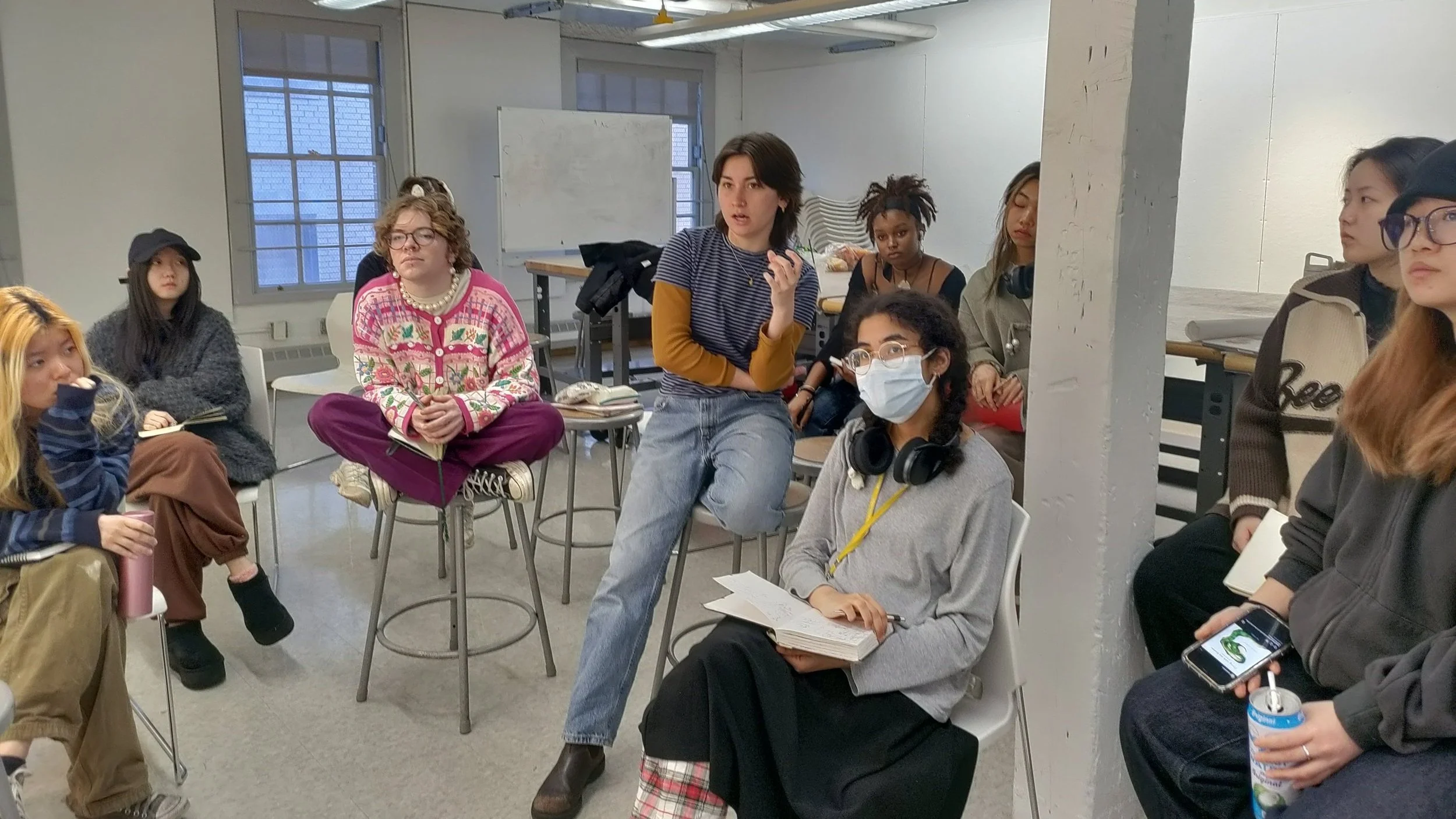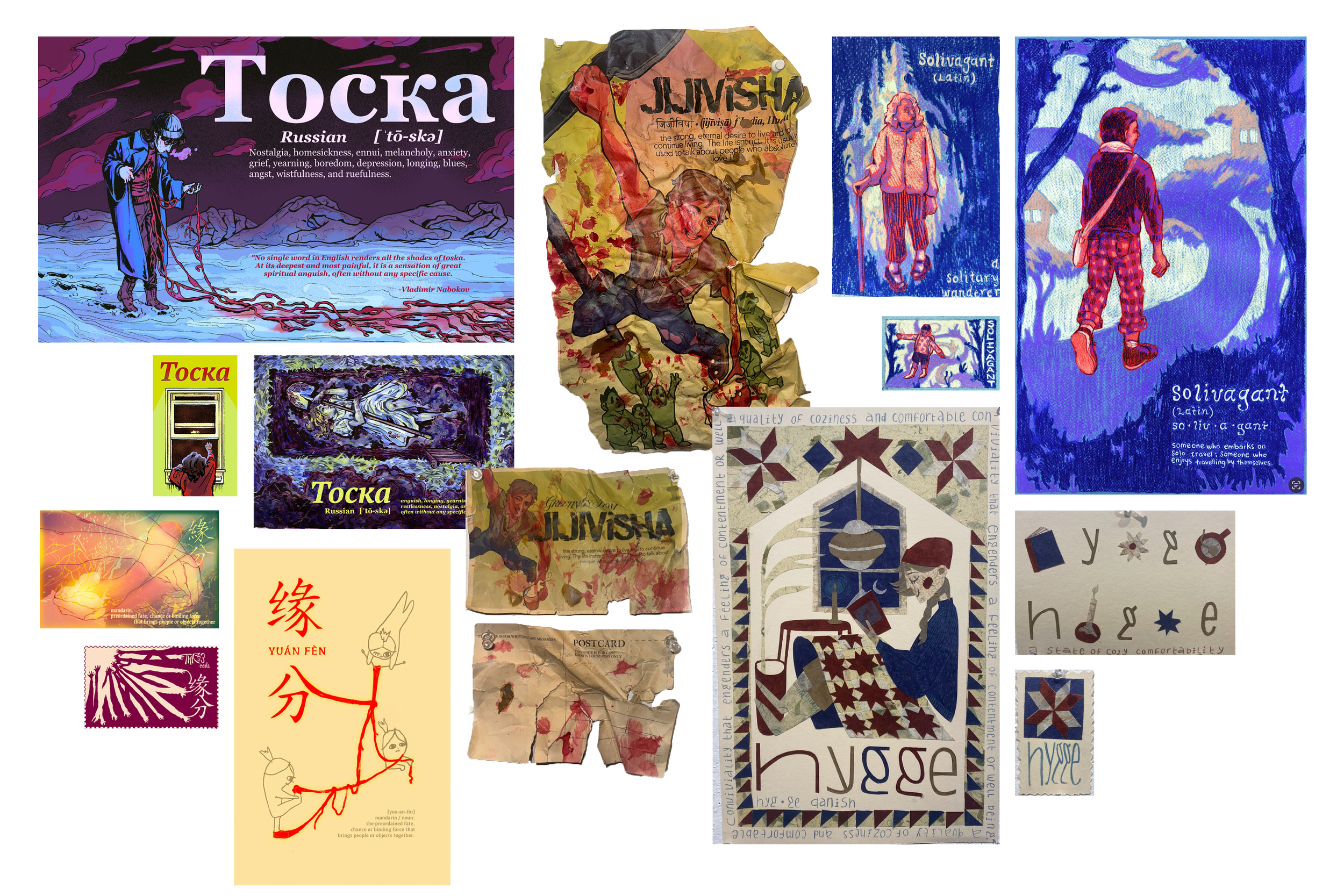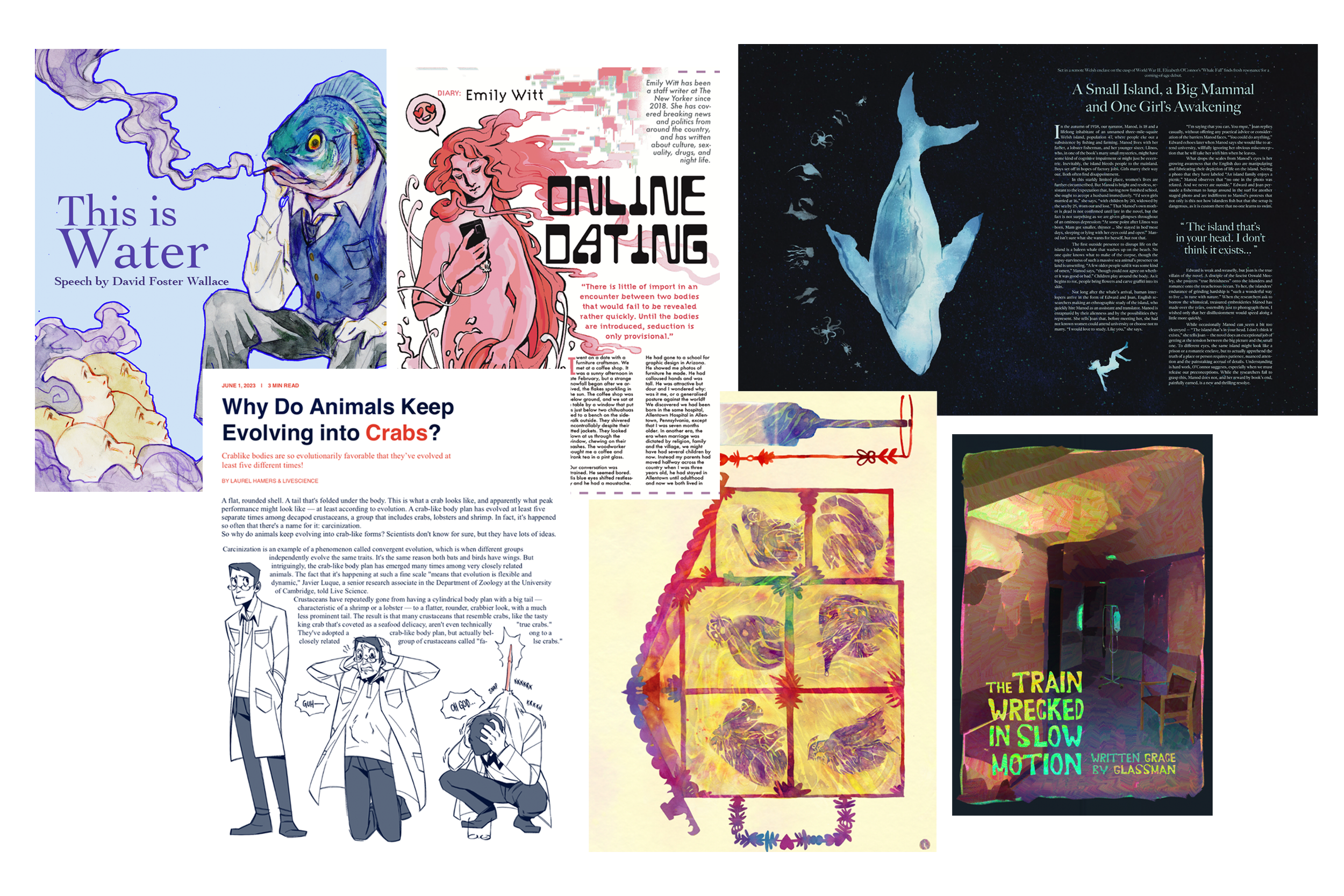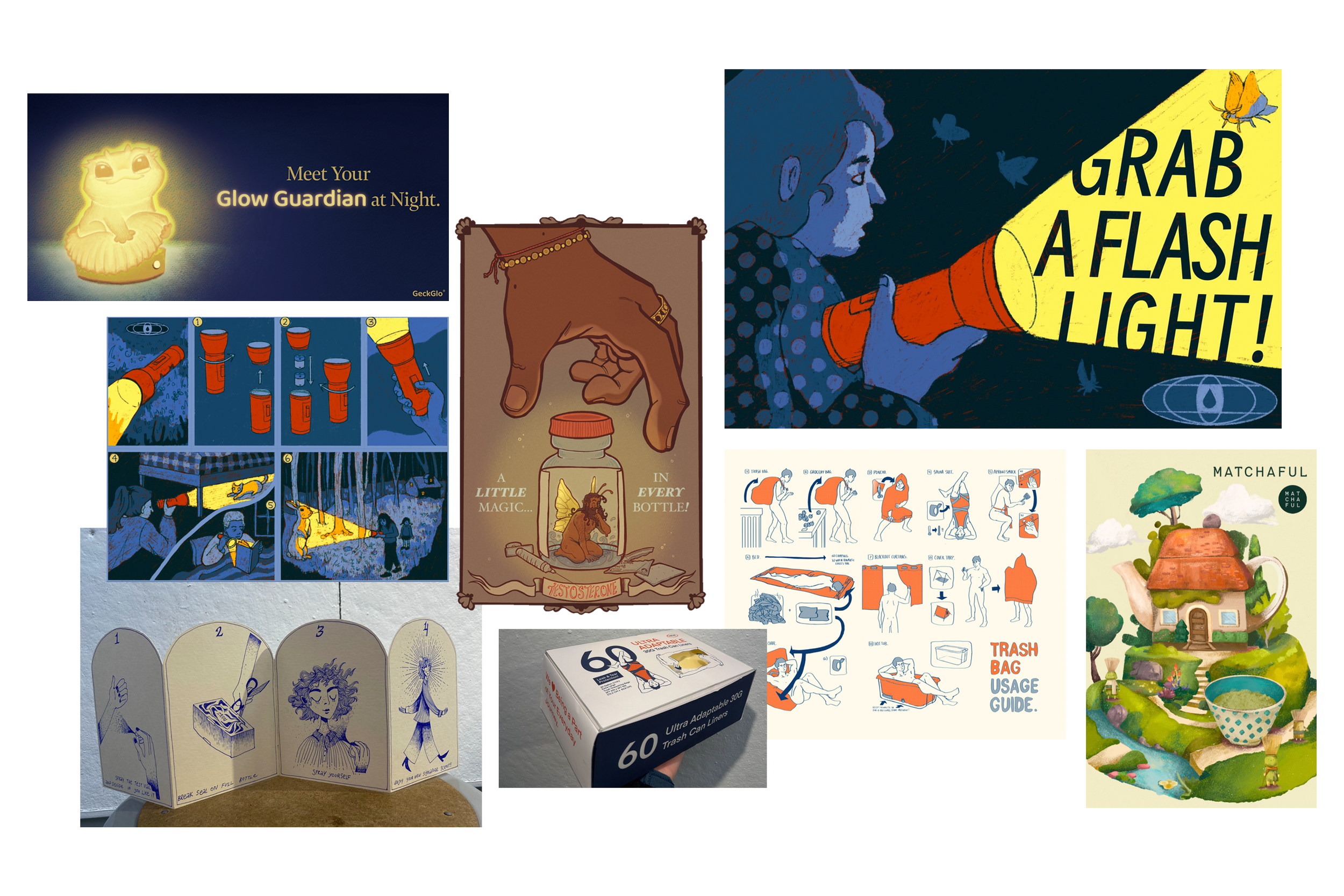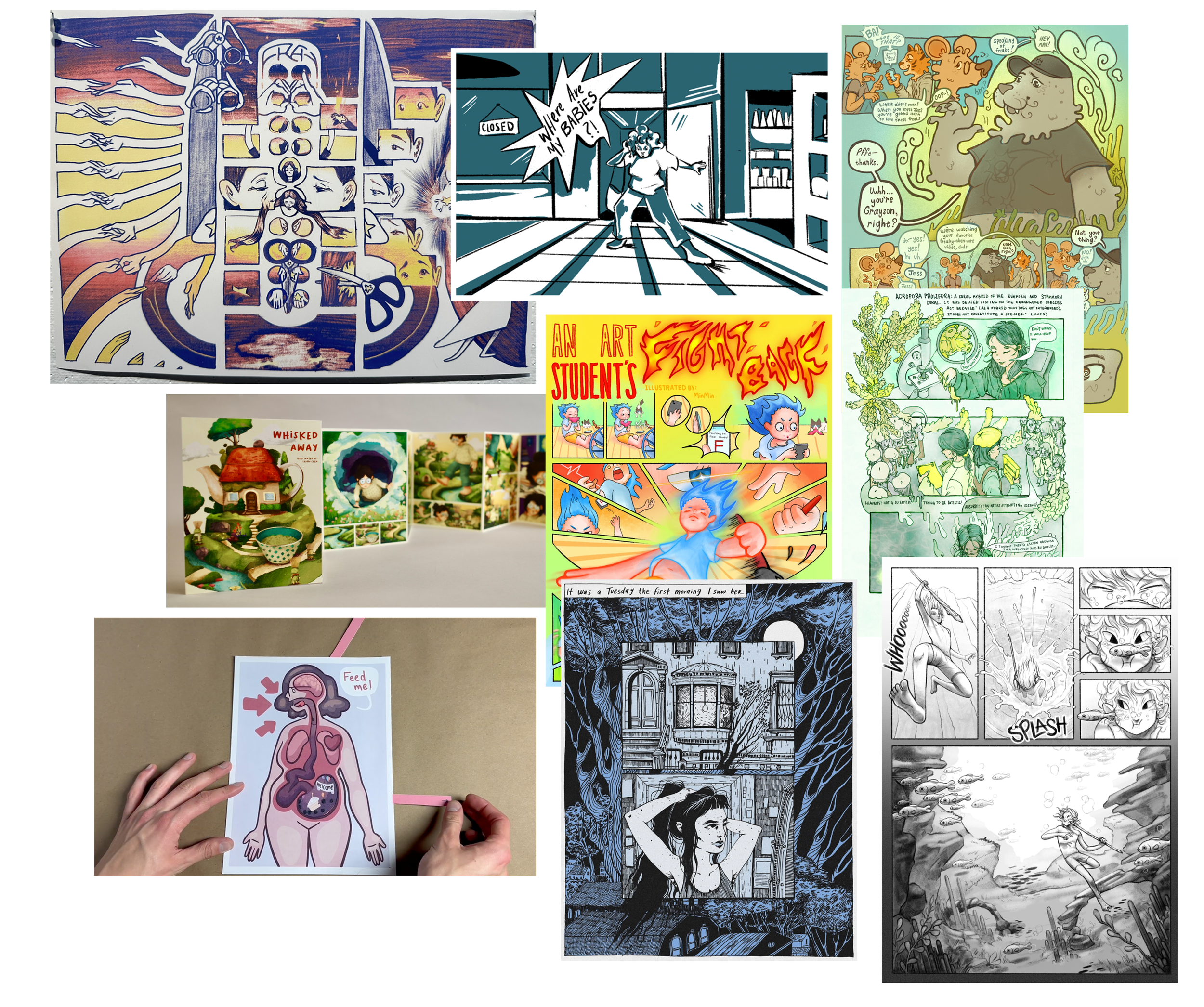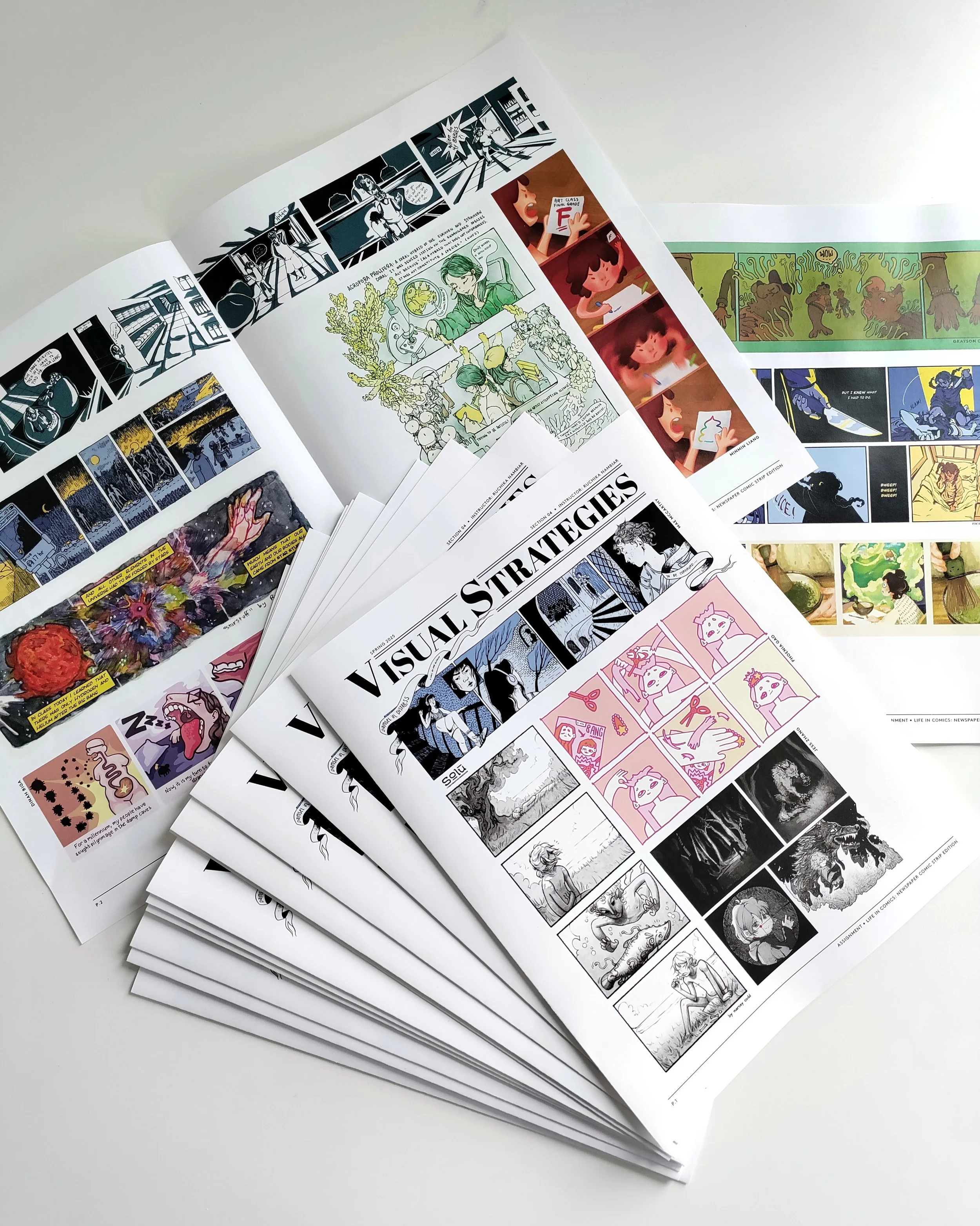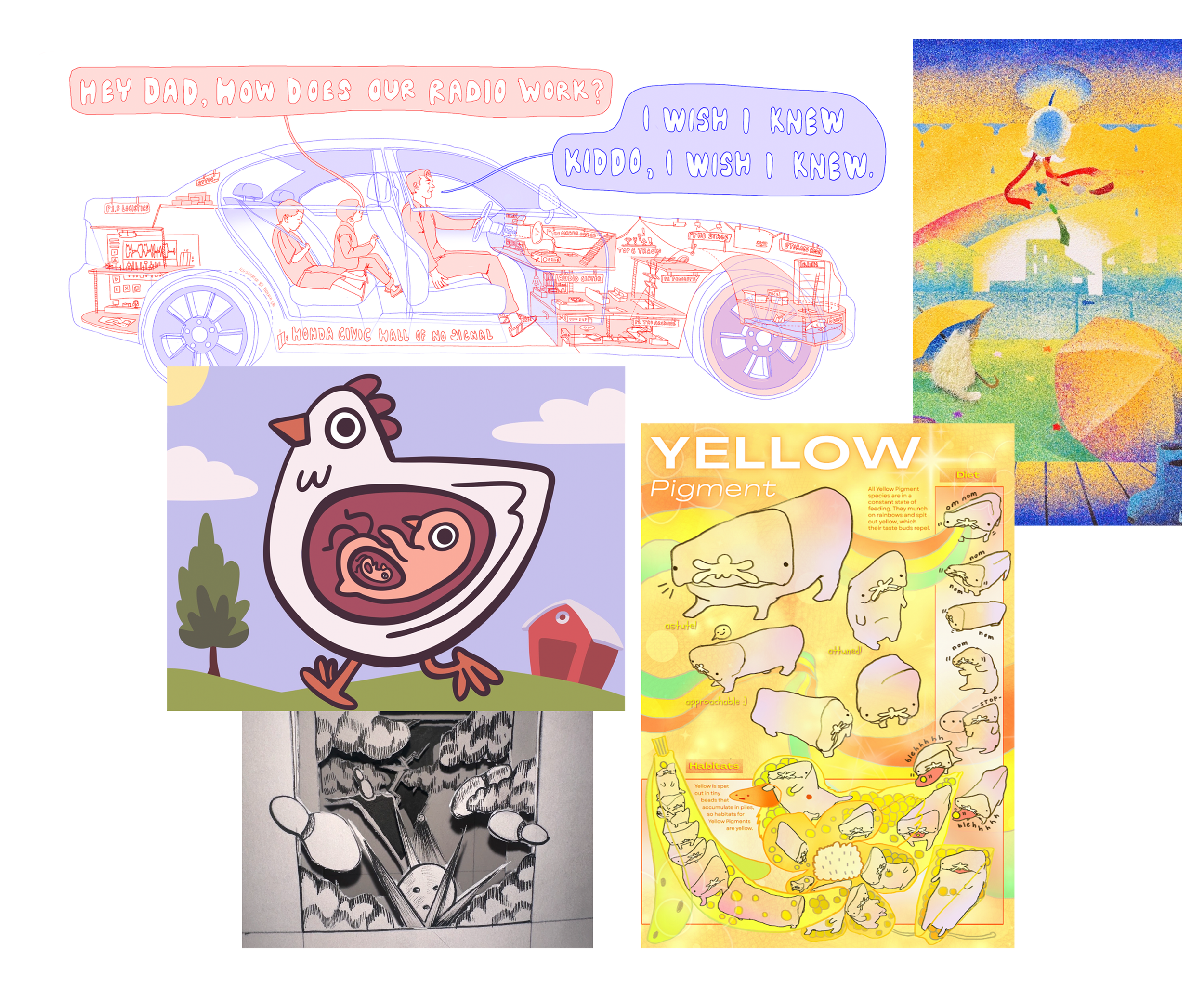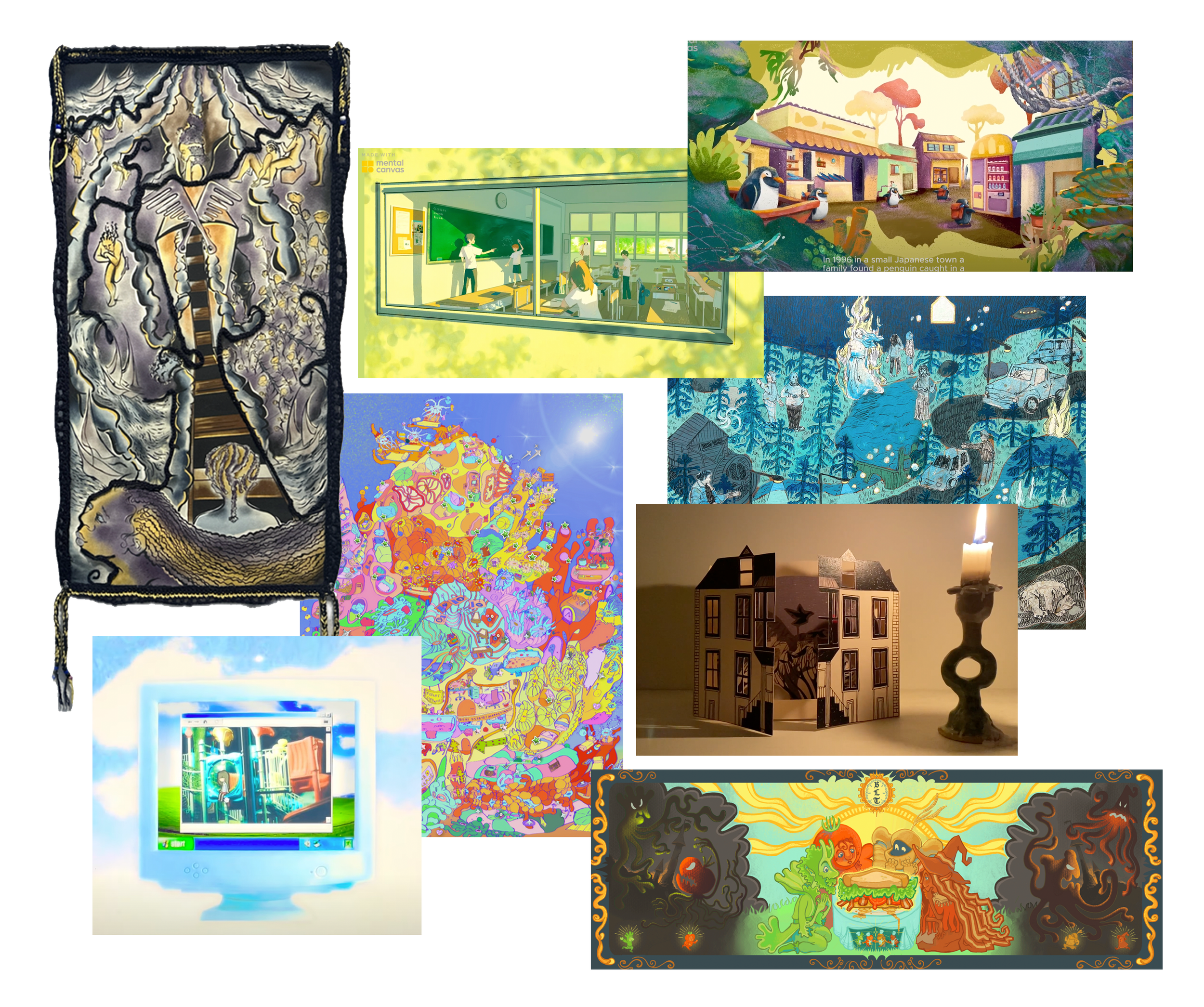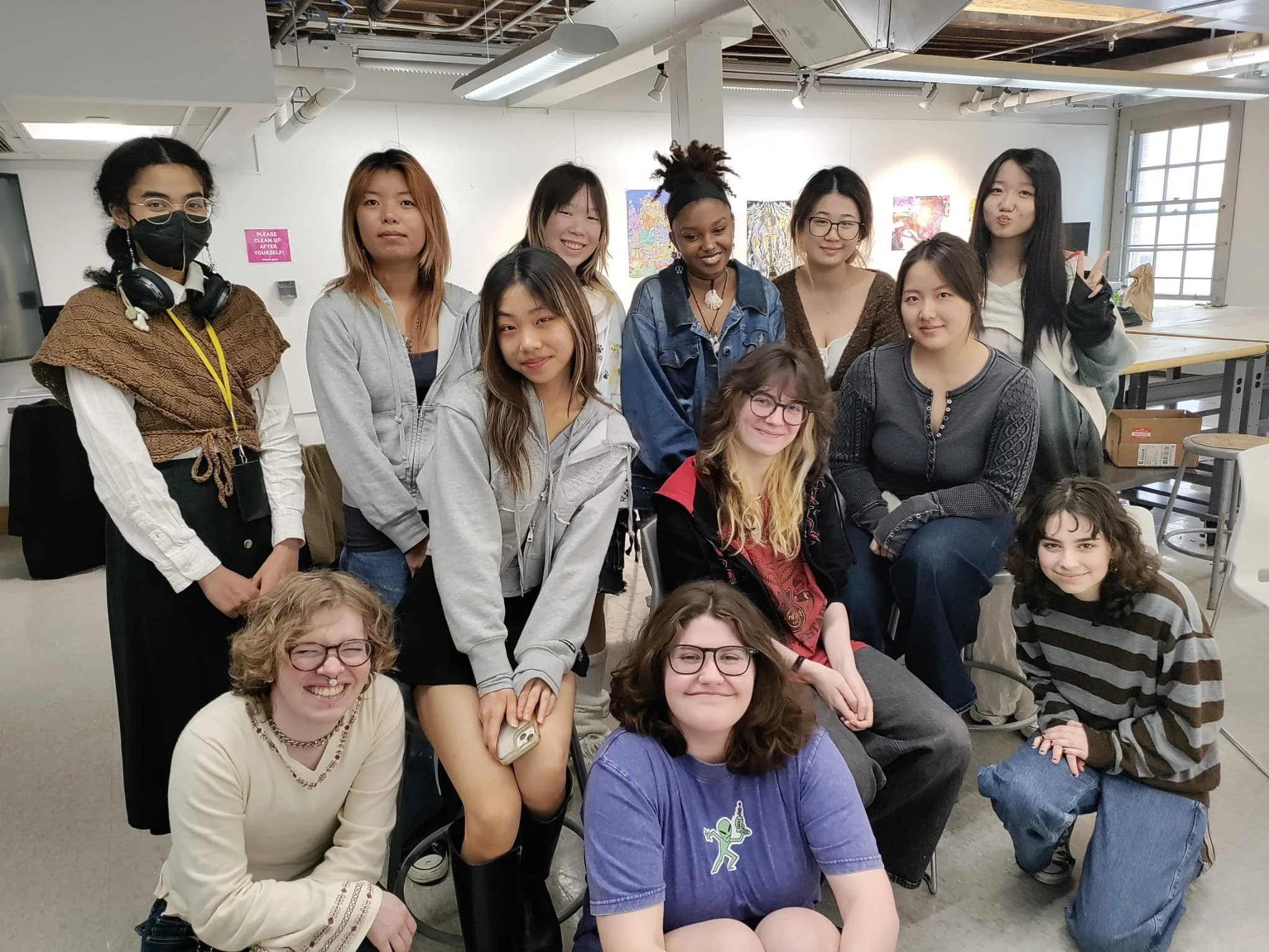Visual Strategies
Rhode Island School of Design
Department of Illustration
Spring 2025 • Undergraduate Course
A requirement for all Illustration sophomores, this course encourages conceptual aptitude and innovation while focusing on specific forms of communication. Through a variety of creative assignments, students grapple with practical issues such as the nature of audience, formal/medium/material constraints and the real-world contexts in which illustrated material often appears. The basic aim of this course is to enable the student to discover a creative identity at the intersection of both concept and form, to wed communicative purpose to artistic voice.
01 • The “Untranslatable” Word Challenge
Students selected from a curated list of the many “exotic” words found online that bear complex meanings with no simple translation into English. They then created an illustration to capture this word – adapted to a poster, a postcard and a postage stamp, adjusting their visual strategies to the real estate of each format and featuring varying text:image ratios in each. The aim was to play with communicating nuance and legibility at different scales, and with/without textual exposition.
02 • Visual Journalism
Students were tasked to pick a journalistic article and then illustrate a covering image and at least two in-text images for their chosen article. They then presented their article as a bi-fold magazine spread as well as adapt their cover image into an Instagram post. The assignment was meant to have students reflect on what constitutes a representative image, choosing poignant moments to illustrate, strategizing where and how to punctuate text with image, and understanding how perspectives and stances can be shaped through editorial illustration.
03 • The Ad vs. the Instructional
For any object/product of their choice, students illustrated and produced two artefacts: 1) an advertisement (whether for print or film) and 2) an instructional leaflet/packaging. This two-pronged assignment was designed to let students appreciate the nuanced differences between creating grandiose imagery that sells/entices/lures, versus space-efficient imagery that must educate/instruct/disclaim.
04 • Life in Comics
Students in this assignment experimented with expanding and contracting spatial/temporal features of a narrative by producing the same story in three different comic formats: a newspaper comic, a 1-page comic and an expanded comic (3+ pages, or a more experimental form). The assignment challenged them to adapt their narrative devices, compositional techniques and illustration styles to suit each format, understanding what to edit, what to compress, what to summarize or leave to interpretation.
Compilation of newspaper comics
05 • Impossible Questions
In this assignment, students picked from a list of “impossible questions” that are commonly asked by children (e.g. Where do babies come from? Why do clouds float?, etc). They then created any artefact of their choice attempting to answer that question for a 5-8 year old audience. Their “answer” could be as scientific or whimsical as they wished. The assignment was designed to unearth the various visual and communicative strategies they may use to make a complex concept digestible to a young audience.
06 • The Museum of Real & Unreal Histories
For their final class project, students developed their own synoptic/panoptic narrative depicting a “historic” event/episode – whether from the real world, or from a fictional one of their own making. The final output had to depict its narrative as a single snapshot without the aid of any explicit textual exposition The goal was not to compress or edit but rather to pack in as much narrative detail and to negotiate multiple events, happenings, actors or timelines within the same visual frame. Their final outputs ranged across illustrations, tapestries, tunnel books, digital games, scrolls and more. As a rider, students also produced a short film narrating their final piece, to appreciate how to capture narrative complexity in their documentation.
